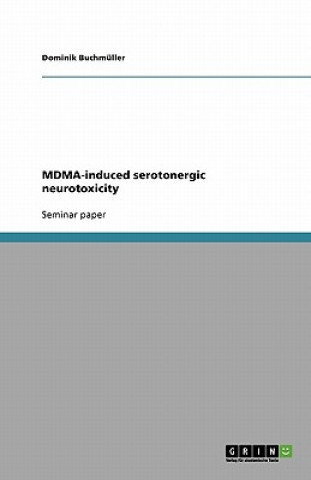
Kód: 01625486
MDMA-induced serotonergic neurotoxicity
Autor Dominik Buchmüller
Seminar paper from the year 2009 in the subject Psychology - Biological Psychology, printed single-sided, grade: A (100%), New College Durham (Duke University, Department of Psychology and Neuroscience), course: Behavior and Neuro ... celý popis
- Jazyk:
 Angličtina
Angličtina - Vazba: Brožovaná
- Počet stran: 32
Nakladatelství: Grin Verlag, 2009
- Více informací o knize

406 Kč

Skladem u dodavatele v malém množství
Odesíláme do 4 dnů
Potřebujete více kusů?Máte-li zájem o více kusů, prověřte, prosím, nejprve dostupnost titulu na naši zákaznické podpoře.
Přidat mezi přání
Mohlo by se vám také líbit
-

Freddie Mercury
277 Kč -

Naomi and Ely's No Kiss List
239 Kč -

My Neighbor Totoro Picture Book
518 Kč -

Ecstasy (MDMA)
942 Kč -

On the Road - Zwischen Kulturen unterwegs
1036 Kč -

Portrét pana W.H. /The Portrait of Mr. W. H.
118 Kč
Dárkový poukaz: Radost zaručena
- Darujte poukaz v libovolné hodnotě a my se postaráme o zbytek.
- Poukaz se vztahuje na celou naši nabídku.
- Elektronický poukaz vytisknete z e-mailu a můžete ihned darovat.
- Platnost poukazu je 12 měsíců od data vystavení.
Více informací o knize MDMA-induced serotonergic neurotoxicity
Nákupem získáte 41 bodů
 Anotace knihy
Anotace knihy
Seminar paper from the year 2009 in the subject Psychology - Biological Psychology, printed single-sided, grade: A (100%), New College Durham (Duke University, Department of Psychology and Neuroscience), course: Behavior and Neurochemistry, language: English, abstract: It is the aim of this paper to review and integrate relevant empirical findings and theoretical discussions concerning the molecular and cellular mechanisms and effects of MDMA-induced 5-HT neurotoxicity in laboratory animals. 3,4-methylenedioxymethamphetamine (MDMA) is a derivative of the synthetic psychostimulant methamphetamine (METH). It also shares some structural and pharmacological properties of mescaline, a naturally occurring psychedelic hallucinogen. At the molecular level, all three substances resemble the monoamine neurotransmitters epinephrine (E) and dopamine (DA). They mimic the neurophysiological actions and effects of E and DA, as well as serotonin (5-HT). METH and MDMA do so by binding to, and reversal of monoamine-specific transporter proteins at the presynaptic plasma membrane. While the psychological effects of METH are mainly due its action as a DA release agent and reuptake inhibitor, MDMA primarily affects the serotonergic system. It has a high affinity for the serotonin-specific transporter (SERT), which carries it into the presynaptic neuron. Inside the cell, MDMA inhibits the vesicular monoamine transporter type 2 (VMAT2), pre-venting intracellular 5-HT from being stored in synaptic vesicles. In addition, MDMA phos-phorylates SERT, which causes a reversal of its reuptake function and, hence, non-exocytotic efflux of 5-HT by the means of passive diffusion. Because neurotransmitter release normally only occurs in case of an action potential, and the released transmitter is partly reabsorbed and recycled, the reverse functioning of SERT depletes 5-HT stores. The equivalent effect of METH via reversal of the DA transporter (DAT) has been linked to its neurotoxic properties (Yamamoto & Zhu, 1998). As a derivative of methamphetamine, MDMA is sometimes believed to have inherited the severe dopaminergic neurotoxicity of METH and its parent compound amphetamine. Such neurotoxic potential has been found in mice but not in rats (Colado, O Shea, and Green, 2004), and remains to be established for non-human primates. The probably most prominent publication claiming that MDMA caused irreversible damage to primate DA neurons (Ricaurte et al., 2002) was shown to be in error and had to be retracted. Instead of a recreational dose of MDMA (3 2 mg/kg), the monkeys had, in fact, been given METH, which, at such doses, is known to be neurotoxic in primates (Villemagne et al., 1998). [...]
 Parametry knihy
Parametry knihy
Zařazení knihy Knihy v angličtině Society & social sciences Psychology Psychological methodology
406 Kč
- Plný název: MDMA-induced serotonergic neurotoxicity
- Autor: Dominik Buchmüller
- Jazyk:
 Angličtina
Angličtina - Vazba: Brožovaná
- Počet stran: 32
- EAN: 9783640439669
- ISBN: 364043966X
- ID: 01625486
- Nakladatelství: Grin Verlag
- Hmotnost: 50 g
- Rozměry: 216 × 140 × 2 mm
- Datum vydání: 06. October 2009
Oblíbené z jiného soudku
-

Psychology Statistics For Dummies
471 Kč -

Research Methods and Statistics in Psychology
1569 Kč -
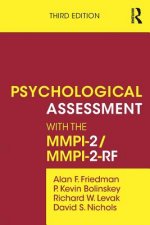
Psychological Assessment with the MMPI-2 / MMPI-2-RF
3491 Kč -

Psychopath Test
381 Kč -

The Stages of Psychosocial DevelopmentAccording to Erik H. Erikson
1060 Kč -

Causism
558 Kč -
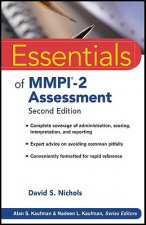
Essentials of MMPI-2 Assessment 2e
1331 Kč -

Ultimate IQ Tests
449 Kč -

Attachment in Adulthood, Second Edition
1527 Kč -

Cognitive Assessment for Clinicians
2133 Kč -

Test Your IQ
638 Kč -

Statistics for Psychology Using R
783 Kč -
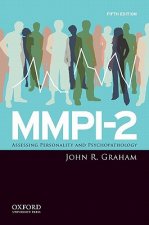
MMPI-2
8324 Kč -

Type Talk
381 Kč -
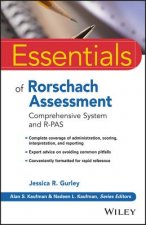
Essentials of Rorschach Assessment - Comprehensive System and R-PAS
1598 Kč -

IQ and Psychometric Test Workbook
447 Kč -

Practice Psychometric Tests
410 Kč -

Starting Out in Methods and Statistics for Psychology
1210 Kč -

Introduction to Psychological Assessment and Psychometrics
2160 Kč -

Rorschach - A Comprehensive System - Assessment of Children & Adolescents 2e V 3
6419 Kč -
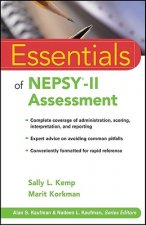
Essentials of NEPSY-II Assessment
1598 Kč -

Step-by-Step Guide to Exploratory Factor Analysis with Stata
1724 Kč -

Essentials of Myers-Briggs Type Indicator Assessment 2e
1313 Kč -

Essentials of Assessment Report Writing, Second Edition
1285 Kč -

Postautonomous Ego Development
682 Kč -

Eye Color
277 Kč -

Handbook of Research Methods for Studying Daily Life
2071 Kč -

Research Methods for the Behavioral Sciences, International Edition
3174 Kč -

CIPP Evaluation Model
2040 Kč -
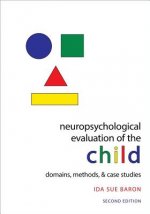
Neuropsychological Evaluation of the Child
5625 Kč -
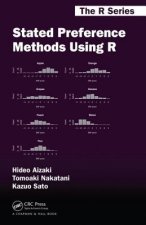
Stated Preference Methods Using R
5946 Kč -

Building Experiments in PsychoPy
1041 Kč -

Practical Mayan Astrology
710 Kč -

From Methodology to Methods in Human Psychology
2485 Kč -

Principles-Focused Evaluation
1710 Kč -

Adolescence. the Physical, Cognitive, Social, Personality, Moral, and Faith Development of Adolescence
486 Kč -

Rorschach - A Comprehensive System, Basic Foundations & Principles of Interpretation V 1 4e
5247 Kč -

Thematic Apperception Test
2653 Kč -

Research Methods in Psychology
1193 Kč -

Adolescent Rorschach Responses
3776 Kč -

Attachment Theory According to John Bowlby and Mary Ainsworth
433 Kč -

Schizotypy
1664 Kč -

Ages & Stages Questionnaires (R) (ASQ-3 (R)): Materials Kit
12715 Kč -

WAIS-IV, WMS-IV, and ACS
2435 Kč -

Handbook of Positive Psychology Assessment
1933 Kč -

Five Ways of Doing Qualitative Analysis
1963 Kč -

Play Therapy Interventions with Children's Problems
3870 Kč -

Achievement Motive
533 Kč -

Qualitative Psychology
2277 Kč
Osobní odběr Praha, Brno a 12903 dalších
Copyright ©2008-24 nejlevnejsi-knihy.cz Všechna práva vyhrazenaSoukromíCookies


 Vrácení do měsíce
Vrácení do měsíce 571 999 099 (8-15.30h)
571 999 099 (8-15.30h)